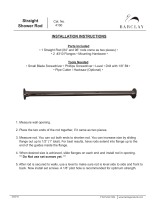
2
Engine settings
General................................................................71
Repair Instructions
Setting the 1
st
piston at top dead center of
compression stroke (17A-01)..............................72
Valve timings, checking and adjustment
(17A-02)...............................................................72
Injection timing, checking / adjusting..................73
Lubrication system
General................................................................75
Repair Instructions
Oil filter, replacement (18A-01)...........................76
Oil filter adapter, replacement (18A-02)..............76
Oil pan, replacement (18A-03)............................77
Oil screen and suction pipe, replacement
(18A-04)...............................................................78
Oil screen and suction pipe, inspection
(18A-05)...............................................................78
Oil pump, replacement (18A-06).........................79
Oil pump, inspection (18A-07).............................81
Relief valve, replacement (18A-08).....................82
Relief valve, inspection (18A-09)........................82
Fuel system
General................................................................83
Repair Instructions
Fuel filter, replacement (19A-01).........................84
Injectors, fault-tracing..........................................85
Injectors, replacement (19A-02)..........................85
Feed pump, replacement (19A-03)......................86
Feed pump, reconditioning (19A-04)...................87
Fuel supply pressure, checking (19A-05)...........88
Fuel injection pump, replacement (19A-06).........89
Idling speed, adjustment (19A-07)......................91
Fuel injection system, bleeding (19A-08)............92
Cooling system
General................................................................93
Repair Instructions
Coolant, draining (20A-01)...................................95
Coolant, filling (20A-2).........................................96
Sea water circuit, draining (20A-03)....................97
Thermostat, replacement (20A-04).....................98
Thermostat, checking..........................................98
Circulation pump, replacement (20A-05)............99
Sea water pump, replacement (20A-06).............100
Sea water pump, reconditioning (20A-07)..........101
Installation and adapter plate for seawater
pump, replacement (20A-08)..............................104
Oil cooler, replacement (20A-09).......................105
Heat exchanger / manifold / coolant tank,
replacement (20A-10).........................................107
Heat exchanger, reconditioning (20A-11)...........109
Charge air cooler (CAC), reconditioning
(20A-12)..............................................................111
Flywheel, flywheel cover
General...............................................................112
Repair Instructions
Flywheel, replacement (21A-01).........................112
Ring gear, replacement (21A-02).......................112
Flywheel cover, replacement (21A-03)..............114
Electrical system
General...............................................................116
Generator............................................................116
Starter motor.......................................................116
Glow plugs..........................................................116
Repair Instructions
Generator, replacement (22A-01).......................117
Generator, maintenance.....................................118
Generator, fault-tracing......................................118
Starter motor, replacement (22B-01).................119
Starter motor, maintenance (22B-02).................119
Starter motor, checking (22B-03).......................120
Glow plugs, replacement (22C-01).....................120
Glow plugs, checking power supply / continuity121
Glow plugs, function check................................121
Wiring Diagram...................................................122
Intake and exhaust system
Turbocharger (TC)(TMD22, TAMD22),
replacement........................................................125
Boost pressure control valve, checking.............126




























